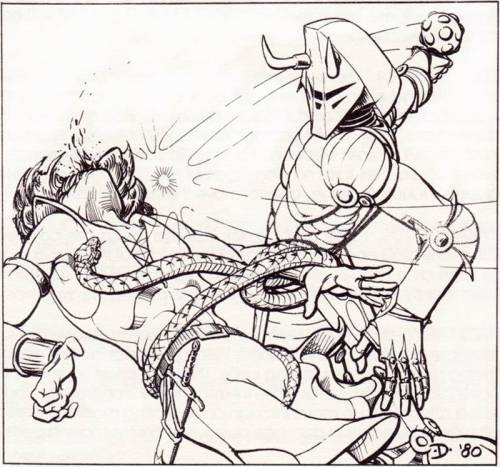With my 5e campaign winding down perhaps (or at least switching to a new phase) in the near future and the Bundle of Holding I mentioned before, I have been giving serious consideration to running Rifts. No, not the system; I left that behind in high school. The setting is what I'm looking at likely to be run with Savage Worlds as it offers the advantage of requiring little work to get started and the VTT support several of my players will desire.
It's been over a decade since I thought about what I might do with Rifts, and almost as long since I riffed off it. I think I will have a slightly different approach that what I imagined in 2014, partly because it's been 11 years, but mostly because I am now thinking about running it with a specific group of players in mind that I know well thanks to playing with them for a long time.
Here are my updated notes:
"I'm Different!"
Characters in should be distinctive and have their own niche. Having a lot of character types helps that but even characters of the same type ought to have their own signature style. This is a trait that makes Rifts sort of comic book-like, but of course it's common to all sorts of pulpier media.
Coded For Easy Identification
I feel like the setting at times suggests a sort of cartoonish, easy recognizability where inspiration is often barely disguised, if at all. This can be taken too far; I certainly don't mean in terms of racial/ethnic stereotypes in portrayals of non-U.S. countries. More that locations within the former U.S. ought to mix signifers of their flavor and the sort of adventures they support. There ought to be a lot of cowboy hats in Lone Star and the West, and just sub-Firefly or Bravestarr Western cliches. The Dinosaur Swamp might mix a bit of hicksploitation with its saurians.
Totally 80sIn 2014, I suggested Rifts perhaps was best approached as an alternate history. That may still be the best way to go, but I think I will focus on "this is the level of technology which has been recovered" and be vague about the past. And that tech level would by something like "1989+super science." Being somewhat post-apocalyptic, obviously, some of the late 20th Century tech wouldn't exist due to lack of suitable infrastructure, but the most advance places are just a projection from the 80s standard: broadcast TV, physical media, and a lack of smartphones or 21st century internet.
"I'm Making it My Business"
This isn't the only way to go, certainly, but the setting lends itself to rogues with hearts of gold setting out to make a buck and colliding with evil. Knowing my players, they will readily take to that approach. It's a mode with a lot of examples from Westerns and Space Opera that make "what are we supposed to do?" readily understandable.
Toyetic
Rifts has a lot of space devoted to gear and equipment. While the accumulation of too much stuff by the characters can be a problem in some games (and possibly here), I think it would be a mistake to too not have all the toys in the catalog available.
More Adventure than Survival
Post-apocalyptic media and games are often about just getting the basic necessities. Rifts isn't Oregon Trail, though. The game focus feels better placed on having cool adventures. I do think the setting should touch on that survival aspect, but it's largely window dressing.


















.jpg)













.jpg)











